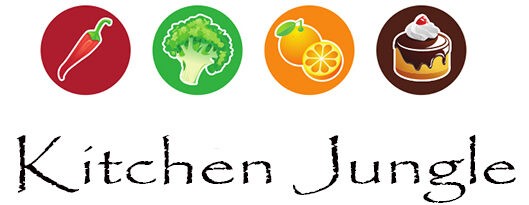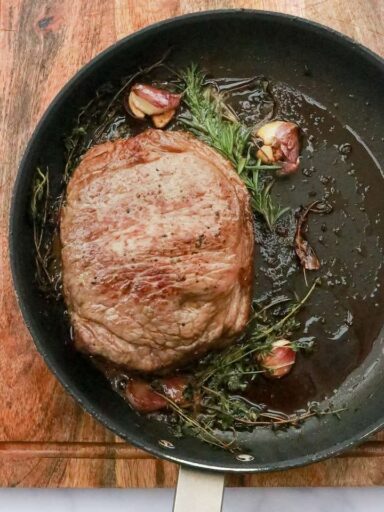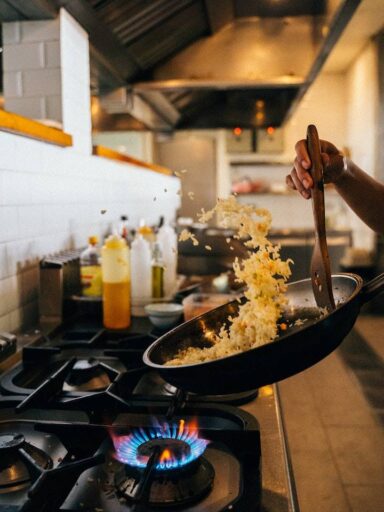Let’s dive into this article about the best types of pans for cooking with this detailed guide. Learn about non-stick, stainless steel, cast iron, copper, and carbon steel pans!
The Importance of Using the Right Type of Pan for Cooking
Cooking can be a creative and exciting experience, but it can also be frustrating when food doesn’t turn out as expected. One factor that can greatly impact the quality of your cooking is the type of pan you use. Each type of pan has its own unique qualities that make it best suited for certain types of cooking methods.
For example, non-stick pans are ideal for cooking delicate foods like eggs or fish because they prevent sticking and tearing. However, if you’re looking to get a nice sear on a steak, a stainless steel or cast iron pan would be better suited because they hold heat well and create a crispy crust.
It’s important to understand how different cooking methods require different types of pans because using the wrong pan could result in overcooked, undercooked, or burnt food. Additionally, using an unsuitable pan could damage the pan itself or even pose safety risks.
The Role Different Types of Pans Play in Cooking Methods
The wide variety of available pans can make choosing one seem daunting, but understanding how each type works will help you choose the right one for your recipe. Non-stick pans are coated with materials such as Teflon that prevent food from sticking to them. They are suited for low to medium-heat cooking methods like frying eggs or sautéing vegetables.
Stainless steel pans have good heat distribution and retention properties which make them ideal for searing meats and creating sauces. Cast iron pans hold heat well making them perfect for high-heat applications such as searing steaks or roasting chickens.
They also develop non-stick properties when seasoned properly with oil. Copper is another popular material used in cookware due to its excellent thermal conductivity which allows it to heat up quickly and evenly.
It is most commonly used for making sauces or sautéing vegetables. Carbon steel pans are durable and versatile, making them great for high-heat cooking methods like stir-frying or searing meat.
Each type of pan has its own unique qualities that make it best suited for certain types of cooking methods. Choosing the right pan for your recipe is a crucial step in ensuring that your dish turns out perfectly every time.
Non-stick Pans
The Science of Non-stick Pans
Non-stick pans are designed to prevent food from sticking to the cooking surface. This is achieved through the use of a special coating that is applied to the pan, which acts as a non-stick surface.
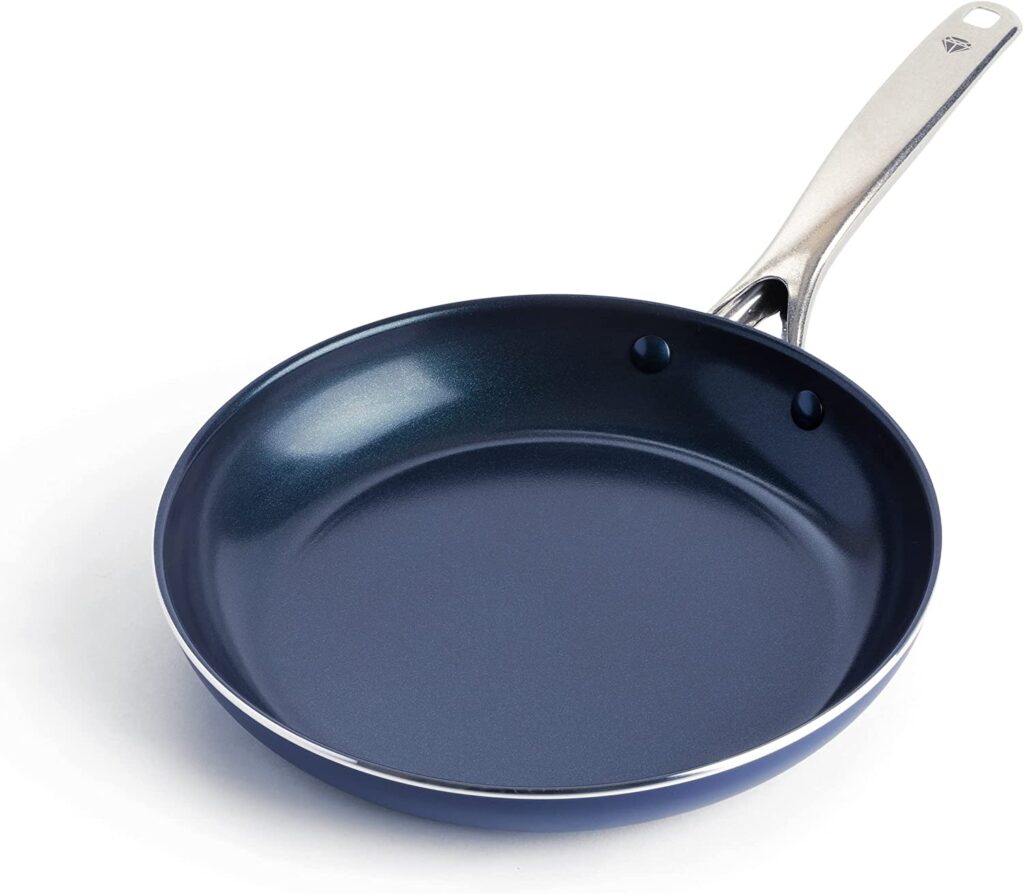
The coating is typically made from polytetrafluoroethylene (PTFE), commonly referred to as Teflon, or ceramic materials. The non-stick coating prevents food from sticking by creating a barrier between the cooking surface and the food.
The surface of a non-stick pan is very smooth, which makes it difficult for food particles to stick to it. Additionally, because there is no friction between the cooking surface and the food, it is much easier to flip and turn foods while they are cooking.
Advantages and Disadvantages of Using Non-Stick Pans
One of the most significant advantages of using non-stick pans is that they require less oil or butter than traditional pans. This can lead to healthier meals and can also save money on ingredients over time.
Non-stick pans are also incredibly easy to clean since food slides right off their surfaces. However, there are also some disadvantages associated with using non-stick pans.
One major concern among health experts is that heating nonstick cookware beyond 500 degrees Fahrenheit can release toxic fumes that may be harmful if inhaled. Additionally, over time, scratches or chips in the nonstick coating may cause it to peel off into food.
Best Uses for Non-Stick Pans
Non-stick pans are perfect for cooking delicate foods such as fish fillets or pancakes that would otherwise stick and fall apart on traditional surfaces like stainless steel or cast iron. They’re also excellent for stir-frying vegetables since you don’t need as much oil as you would with traditional pans.
When using non-stick pans, it’s important to avoid using metal utensils since they can scratch the non-stick coating. Instead, opt for silicone, nylon, or wooden utensils to keep the surface intact.
Stainless Steel Pans
The Basics
Stainless steel pans are made of an alloy that contains at least 10.5% chromium, which gives them their signature shiny appearance and resistance to corrosion. They conduct heat poorly, but they are durable and easy to clean. They are also non-reactive, meaning they won’t affect the flavor of acidic foods like tomatoes or vinegar.

Because stainless steel doesn’t distribute heat evenly, it is often paired with a layer of aluminum or copper in a process called bonding or clad construction. This creates a pan that heats up quickly and evenly but still has the benefits of stainless steel.
Advantages and Disadvantages
One advantage of stainless steel pans is their durability – they can last for years without showing signs of wear and tear. They’re also very easy to clean – most food residue comes right off with soap and water.
One disadvantage is that they don’t conduct heat as well as other materials like copper or aluminum, so it can be difficult to get an even cook on certain foods without burning them. Additionally, because they’re not non-stick like Teflon-coated pans, food can stick more easily if not cooked correctly.
Best Uses
Stainless steel pans are versatile and great for searing meats, frying vegetables, and sautéing onions or garlic for sauces or soups. They’re also good for cooking acidic foods that may react with other materials such as cast iron or aluminium-based cookware.
If you’re looking to invest in a set of high-quality pots and pans that will last you years without breaking down quickly, consider purchasing stainless steel cookware with added layers for better heat distribution. Choose one with deep sides for frying or sautéing vegetables or meats without spilling over the sides.
Cast Iron Pans
What are Cast Iron Pans and How Do They Work?
Cast iron pans are made by pouring molten iron into a mold of the desired shape. The result is an extremely durable and heavy pan that can withstand high heat and last for generations.
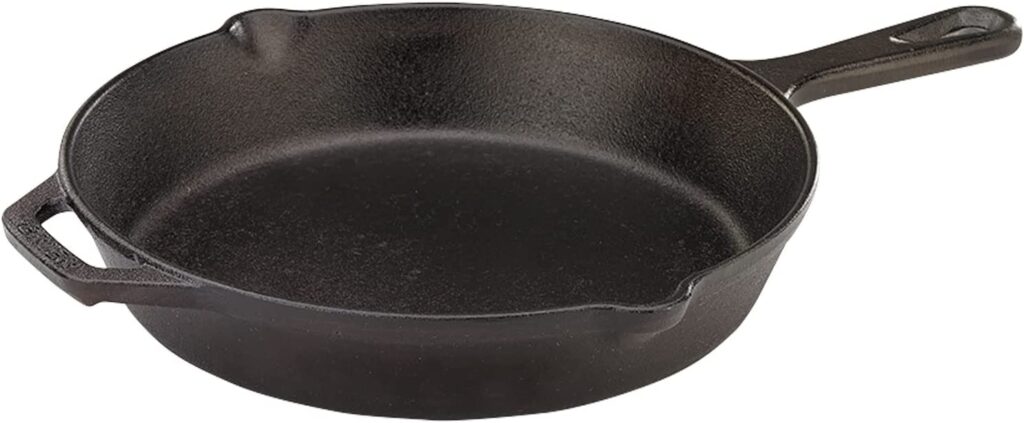
Cast iron pans have a rough, textured surface that helps to create a non-stick cooking surface over time as it becomes seasoned with use. When cooking with cast iron, it is important to preheat the pan before adding any food.
This allows the pan to evenly distribute heat throughout its surface. Additionally, cast iron pans retain heat well, which means they can be used for dishes that require a long cook time or need to be kept warm for serving.
Advantages and Disadvantages of Using Cast Iron Pans
One major advantage of using cast iron pans is their durability. When properly cared for, these pans can last for decades without showing signs of wear and tear. They are also versatile; they can be used on the stovetop or in the oven, making them ideal for dishes like cornbread or frittatas.
However, there are also some disadvantages to using cast iron pans. For one, they are very heavy and can be difficult to handle.
They also take longer than other types of cookware to heat up initially. And while they do become non-stick over time with seasoning, this process takes longer than with other types of non-stick pans.
Best Uses for Cast Iron Pans
Cast iron pans are best used when cooking dishes that require high heat or long cook times. Some examples include searing meats like steak or chicken thighs, frying foods like fried chicken or hushpuppies, and baking cornbread or other bread in the oven.
Another great use for cast iron is making one-skillet meals like a frittata or hash. Because cast iron pans can go from stovetop to oven, you can cook the entire meal in one pan, which means less cleanup and more time spent enjoying your delicious creation.
Copper Pans
What are Copper Pans and How do They Work?
Copper pans, as their name suggests, are made from copper. Copper is a great conductor of heat, which makes it an excellent material for cookware.
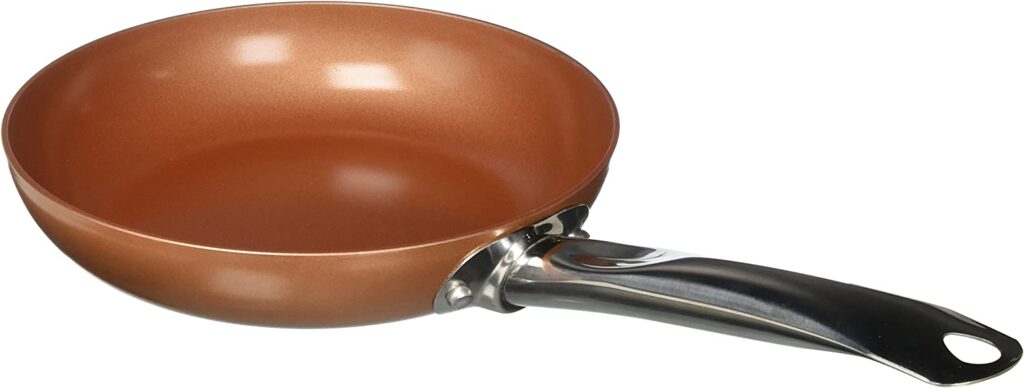
Copper pans can distribute heat evenly and quickly throughout the pan surface, which results in better cooking results. They are also great for making sauces and delicate dishes that require precise temperature control.
However, copper is not a very durable material on its own, so most copper pans have a layer of tin or stainless steel on the inside to protect the copper from corrosion and prevent food from reacting with the metal. Some high-end copper pans may have a layer of silver or gold on the inside instead of tin or stainless steel.
Advantages and Disadvantages of Using Copper Pans
One advantage of using copper pans is their superior heat conductivity. This means that they can get hot quickly and distribute heat evenly across the pan’s surface. This feature allows for better control over cooking temperatures than other materials like stainless steel or cast iron.
Another advantage is that they are aesthetically pleasing. The shiny finish of copper gives them an elegant look that can enhance any kitchen decor.
However, there are some disadvantages to consider when using copper pans. One major disadvantage is their price point, they tend to be more expensive than other materials due to their high-quality construction.
Additionally, they require special care and maintenance to keep them looking their best since they can tarnish easily if not cleaned properly. Another disadvantage is that because they’re such good conductors of heat, they can get too hot too quickly if left unattended on a stove top burner for even just a few minutes- this can be dangerous if you don’t keep an eye on them!
Best Uses for Copper Pans
The best uses for copper pans are for cooking delicate dishes that require precise temperature control, like sauces or eggs. They’re also great for searing meats or caramelizing sugar due to their excellent heat distribution.
If you’re looking to invest in a high-quality piece of cookware that will last a long time and give you excellent cooking results, then a copper pan is definitely worth considering. Just be sure to take good care of it so it keeps its shine and works its best for years to come!
Carbon Steel Pans
The Versatile and Durable Cookware You Need to Try
Carbon steel pans are the newest addition to the cookware family. They are becoming more popular among professional chefs and home cooks because of their versatility, durability, and affordability. Carbon steel is an alloy of iron and carbon that is heated until the steel becomes malleable, then it’s rolled into thin sheets to create a pan.
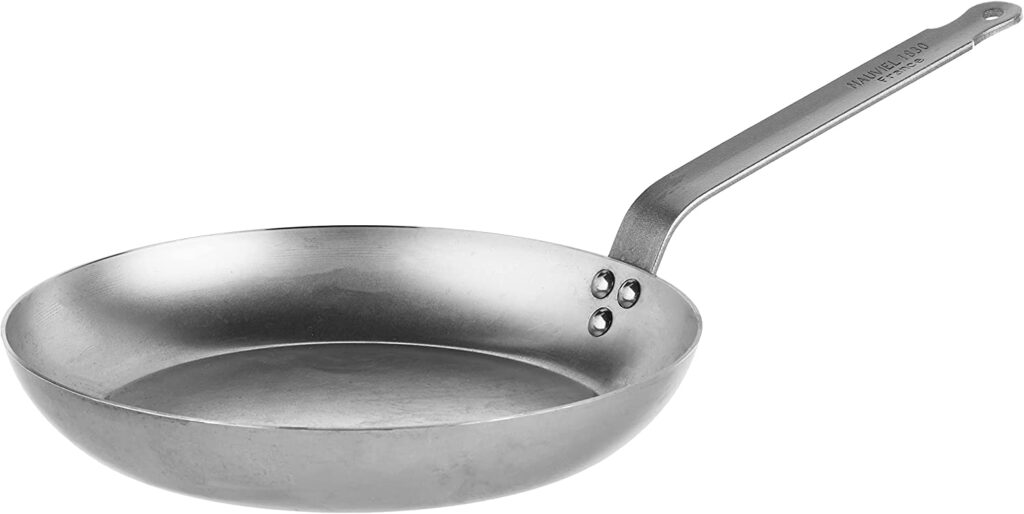
One reason why carbon steel pans are so popular is their ability to heat up quickly while distributing heat evenly. This makes them perfect for searing meats or creating a crispy crust on your favorite dishes.
Another reason why chefs love carbon steel pans is because they can go from stovetop to oven seamlessly, making them ideal for one-pot meals. While carbon steel pans are great for many cooking tasks, they do have some disadvantages.
One of these disadvantages is that they need to be seasoned before use, which can take some time and effort. Additionally, they’re prone to rust if not cared for properly, so it’s important to store them in a dry place.
Best Uses for Carbon Steel Pans
Carbon steel pans can be used for a variety of cooking tasks because they’re durable enough to handle high temperatures without warping or cracking. One popular use for these pans is searing meat because of their ability to retain heat well.
They’re also great for sautéing vegetables or stir-frying because the curved edges make it easy to move ingredients around the pan. Another great use for carbon steel pans is baking bread or pastries in the oven due to their ability to conduct heat evenly throughout the pan.
They’re also great for creating a deliciously crispy crust on your pizza by heating up quickly and maintaining high temperatures. Carbon steel pans are versatile cookware that should be added to every kitchen.
They’re perfect for high-heat cooking tasks and can go from stovetop to oven with ease. While they do require some extra care, their durability and affordability make them a great investment for any home cook or professional chef.
Conclusion
After exploring the different types of cookware available, it is clear that each material has its own strengths and weaknesses. Non-stick pans are great for cooking delicate foods like eggs, while stainless steel pans are excellent for searing meats.
Cast iron pans excel at evenly distributing heat and maintaining high temperatures, while copper pans offer unparalleled heat conductivity. Carbon steel pans are versatile enough to handle high heat and delicate foods alike.
It’s important to choose the right type of pan for your cooking needs in order to get the best results. Each type of pan has its own unique properties that can make a significant impact on the flavor and texture of your food.
In addition to selecting the right type of pan, it’s crucial to take good care of your cookware. Properly seasoned cast iron and carbon steel pans can help prevent rust and prolong their lifespan.
Regularly cleaning non-stick pans with gentle detergents can prevent scratches and damage to their non-stick coating. Ultimately, investing in quality cookware is a worthwhile endeavor for any home chef looking to elevate their cooking game.
With the proper tools at your disposal, you’ll be able to create delicious meals that will delight your taste buds and impress your loved ones. As you embark on your culinary journey, remember that cooking is an art form that requires patience, practice, and a willingness to experiment.
With dedication and enthusiasm, you’ll be able to create dishes that bring people together and nourish both body and soul. Happy cooking!
Finally, if you liked this guide to the best types of pans for cooking let me know in the comments below.
